USFWS Shares Kodiak Island Salmon Stories
Check out this great feature from Alaska’s United States Fish and Wildlife office on Kodiak Island salmon.
First Fish
It’s an early morning in early June, and a man in dark blue coveralls paces slowly down the beach to river’s mouth. A few casts into the current and he moves on, stopping again as the beach ends and small waves break along the river’s flow. In the distance behind him, the city of Kodiak rises above the breakwater and ship masts of the downtown harbor. Across the river and just out to sea, small aluminum skiffs move hopefully along the white float line of waiting gillnets.
Across the city, residents wait for the flash of blue-green scales and silver bellies of ocean-fresh sockeye, the first fish of the season to return to their birth streams in the Buskin River watershed.
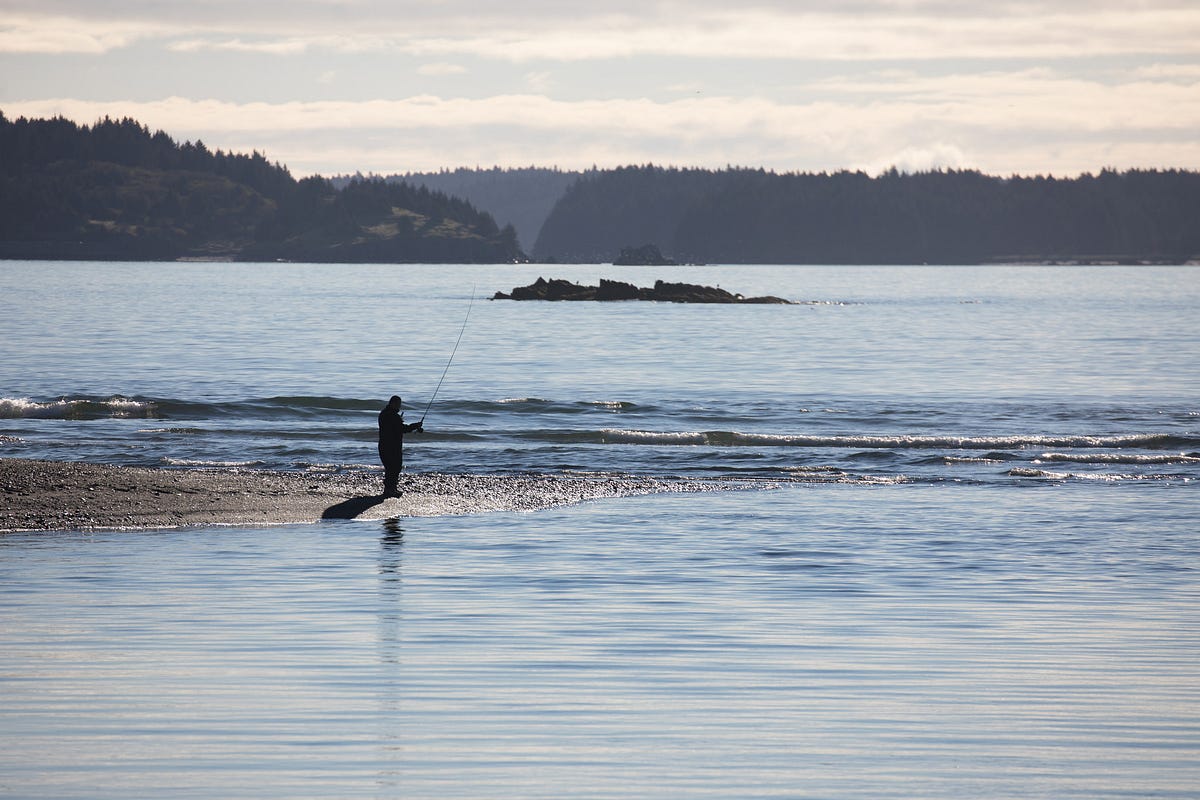
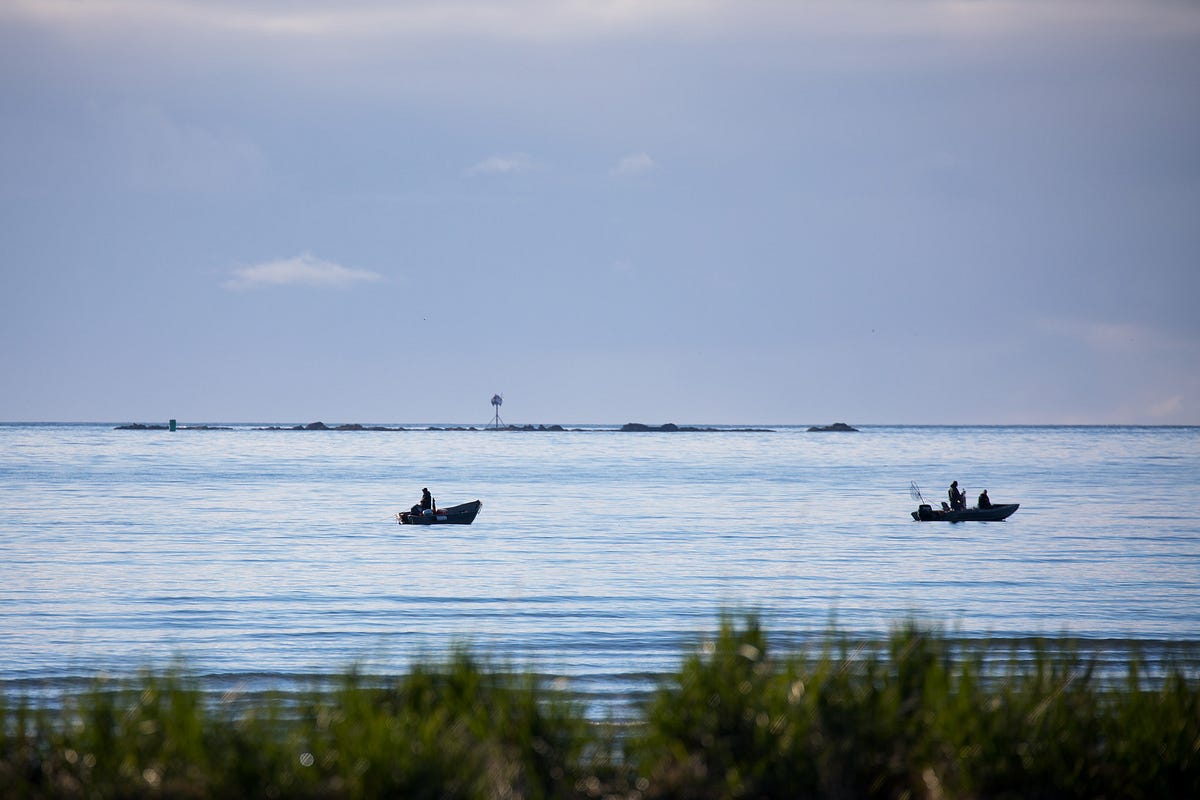

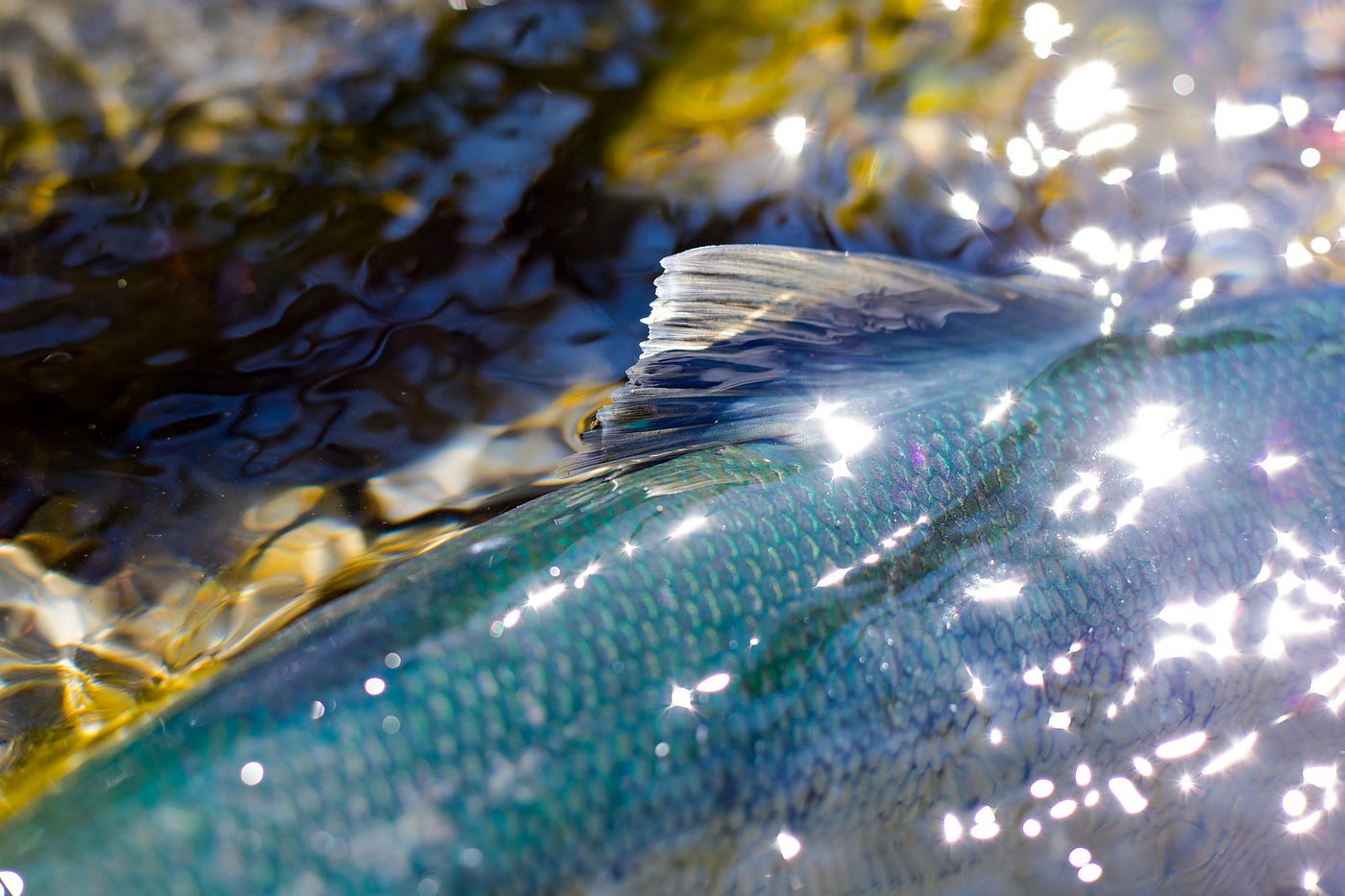

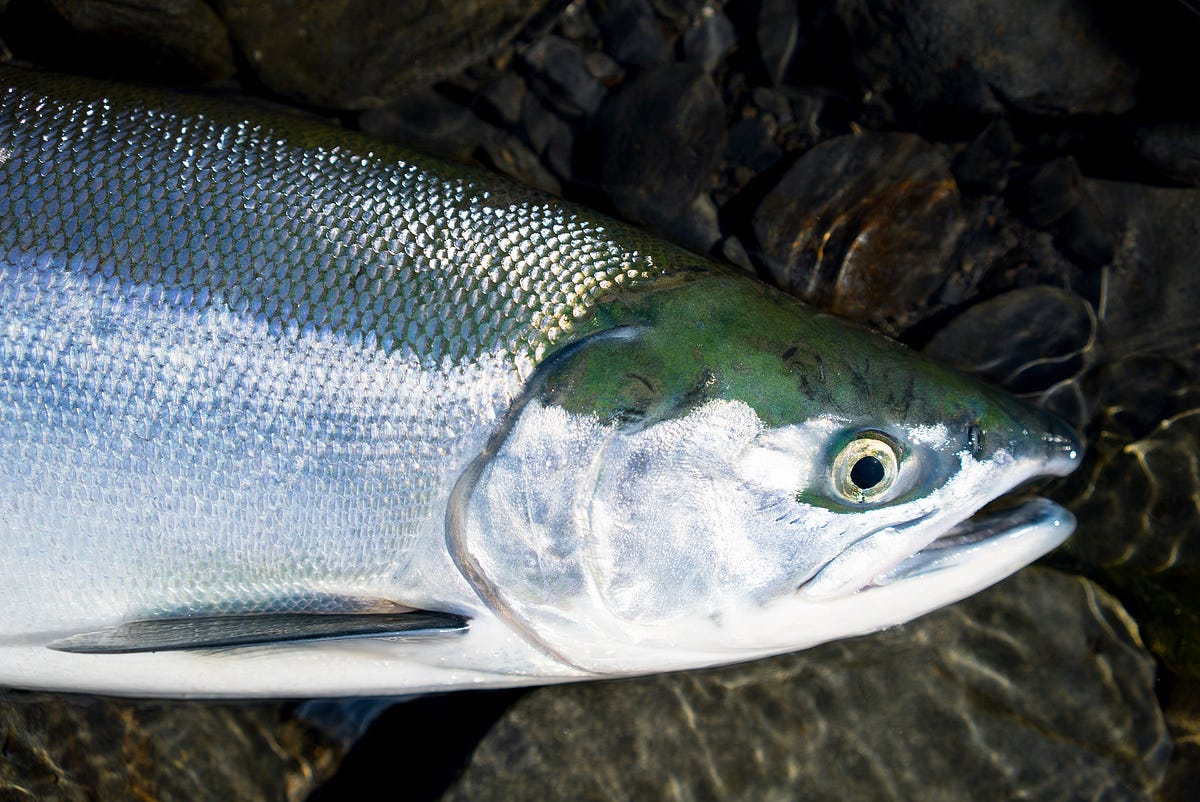
After a long winter, the Buskin River offers some of the earliest subsistence and sport fishing opportunities for Kodiak residents and visitors. Easily accessible and only four miles from downtown, the Buskin River has supported an important fishery for over 5,500 years?—?historically one of the largest subsistence resources on the Archipelago. Filling the freezer with Buskin River reds (sockeye) is part of early summer life, and a tradition for many. The winding waters, rich with life, are a backyard treasure that nourish the Kodiak community throughout the year.
The Salmon Song & the Magic River
Just above the river beach where hopeful fishermen cast, a circle of kindergarten and 1st grade campers begin to sing:
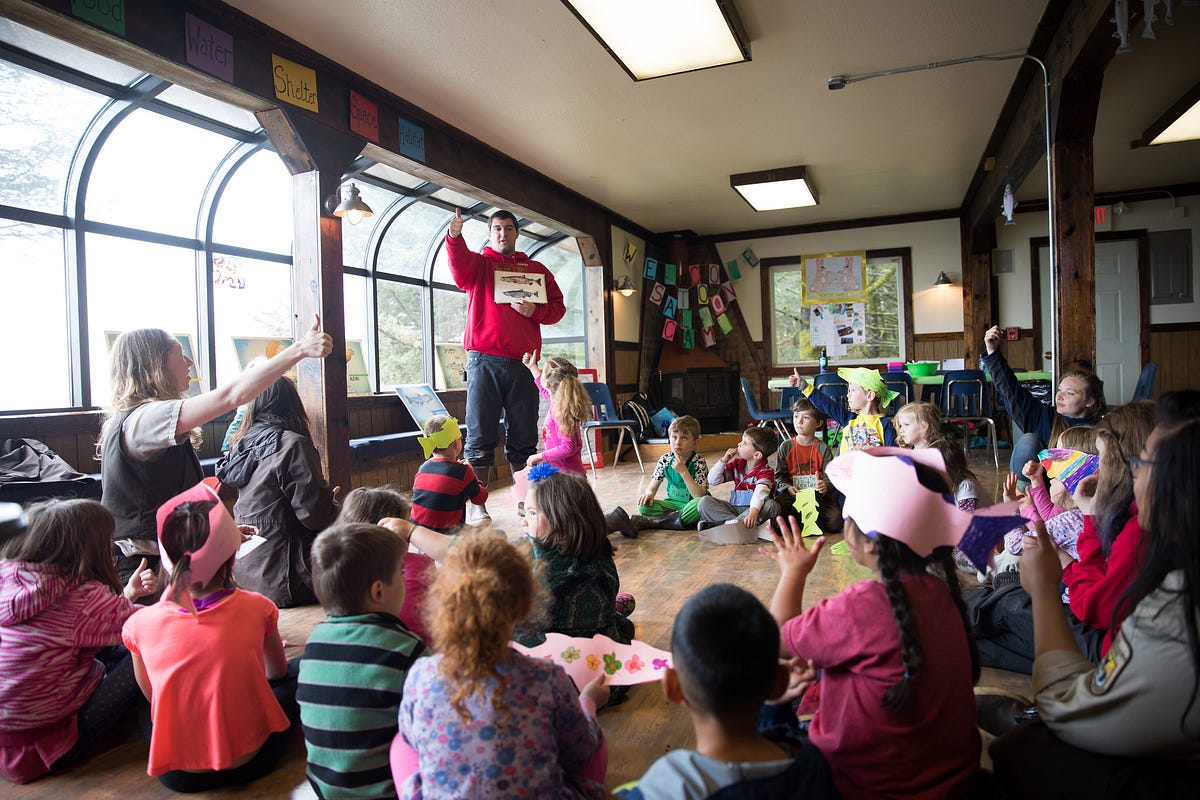
Just a little egg I am,
Buried under rock and sand,
Soon I’ll be an egg with an eye,
Then an alevin, then a little fry…
I’m a salmon, I’m a salmon,
I’m a salmon!
School is out for summer, but learning the salmon life cycle is all part of a day’s fun at the Kodiak National Wildlife Refuge Salmon Camp!
Watch: The Salmon Song
The Refuge’s Salmon Camp offers week-long science learning and outdoor exploration for children K-8th grade throughout the summer. With the Buskin River Beach House as home base, the campers grow up exploring the river in their backyard?—?discovering fish and fishing as they advance from one year to the next.
It all starts with the “Magic” River. For 5 and 6 year olds, a concrete wall at the beach house transforms into a mysterious watery wonderland. Campers practice their casts and sometimes find a tug on the end of their lines… reeling in, they find a fish!


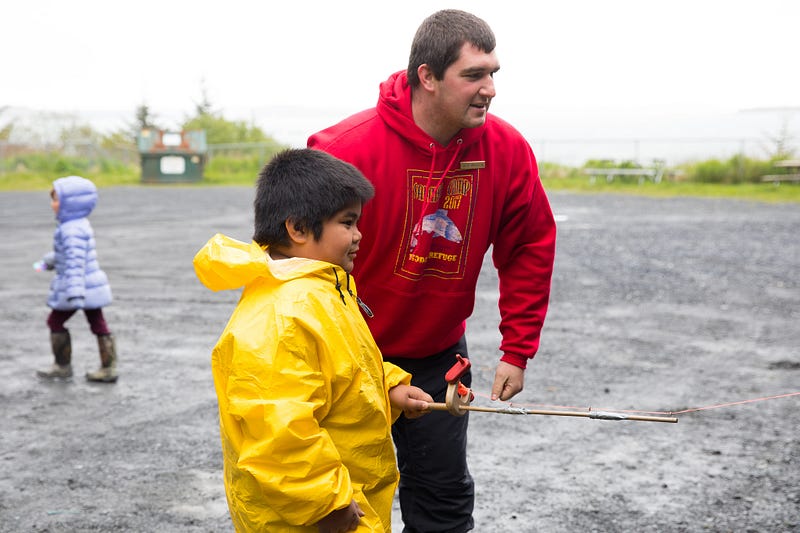
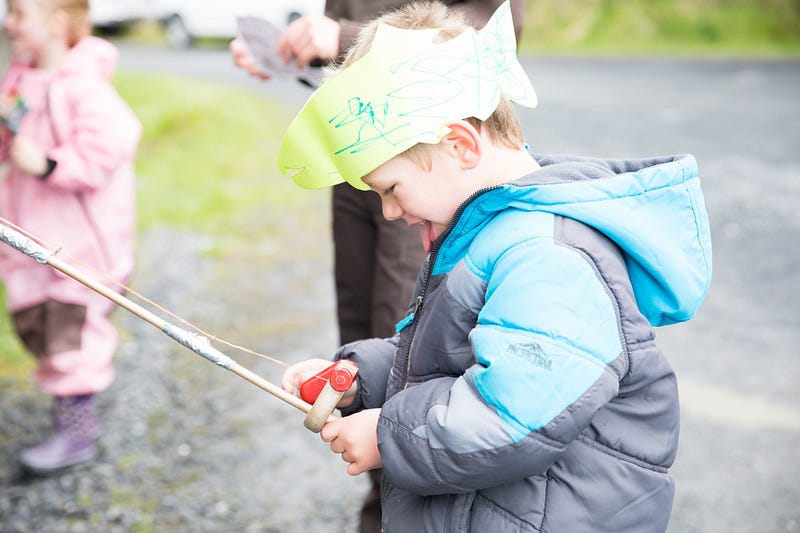

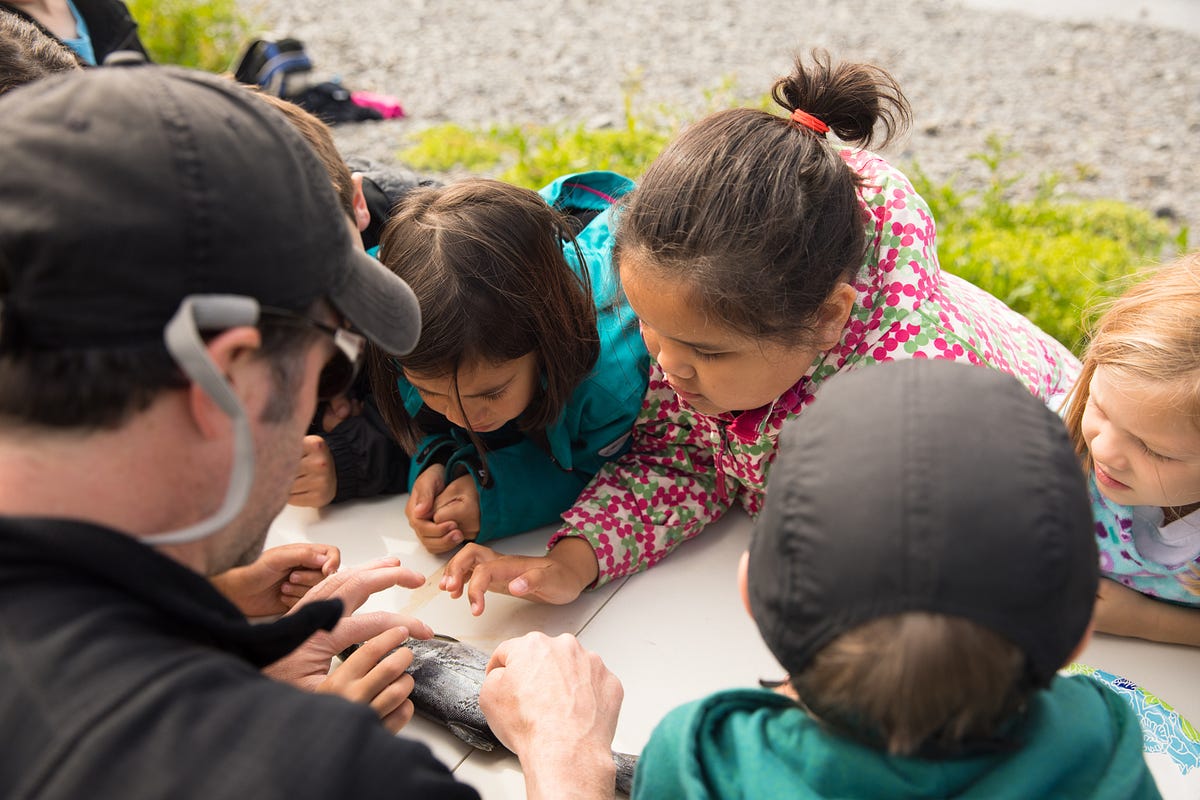
A great big fish is what I am
Swimming in the big ocean,
Back to the river I’ll smell my way,
Maybe you’ll see my kids someday…
I’m a salmon, I’m a salmon, I’m a salmon!
As campers grow up, their fishing days at Salmon Camp move to the Buskin River?—?with real rods, water, and the chance to catch a salmon or Dolly Varden.
They also learn more about salmon biology, with the help of fish dissection activities on the river bank. As the salmon return each year, so do the students, building their connection to the cycles and rich life that runs through the river and enriches their community.
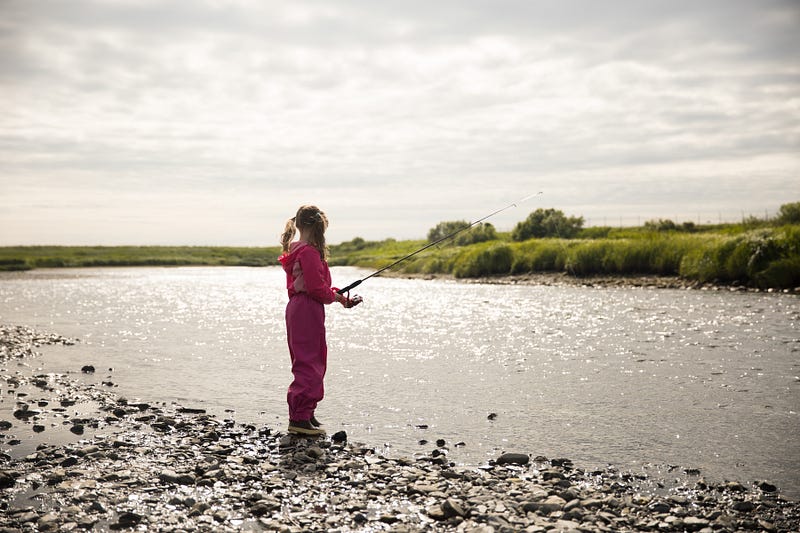


Baby Salmon Live Here
Options are everything for salmon in a river. The Buskin watershed begins at the base of steep mountain ridges and includes several tributaries and lakes. Roads criss-cross the watershed cradled by the city of Kodiak, the largest Coast Guard base in the nation, the Island’s main airport, and the legacy of World War II Navy infrastructure.
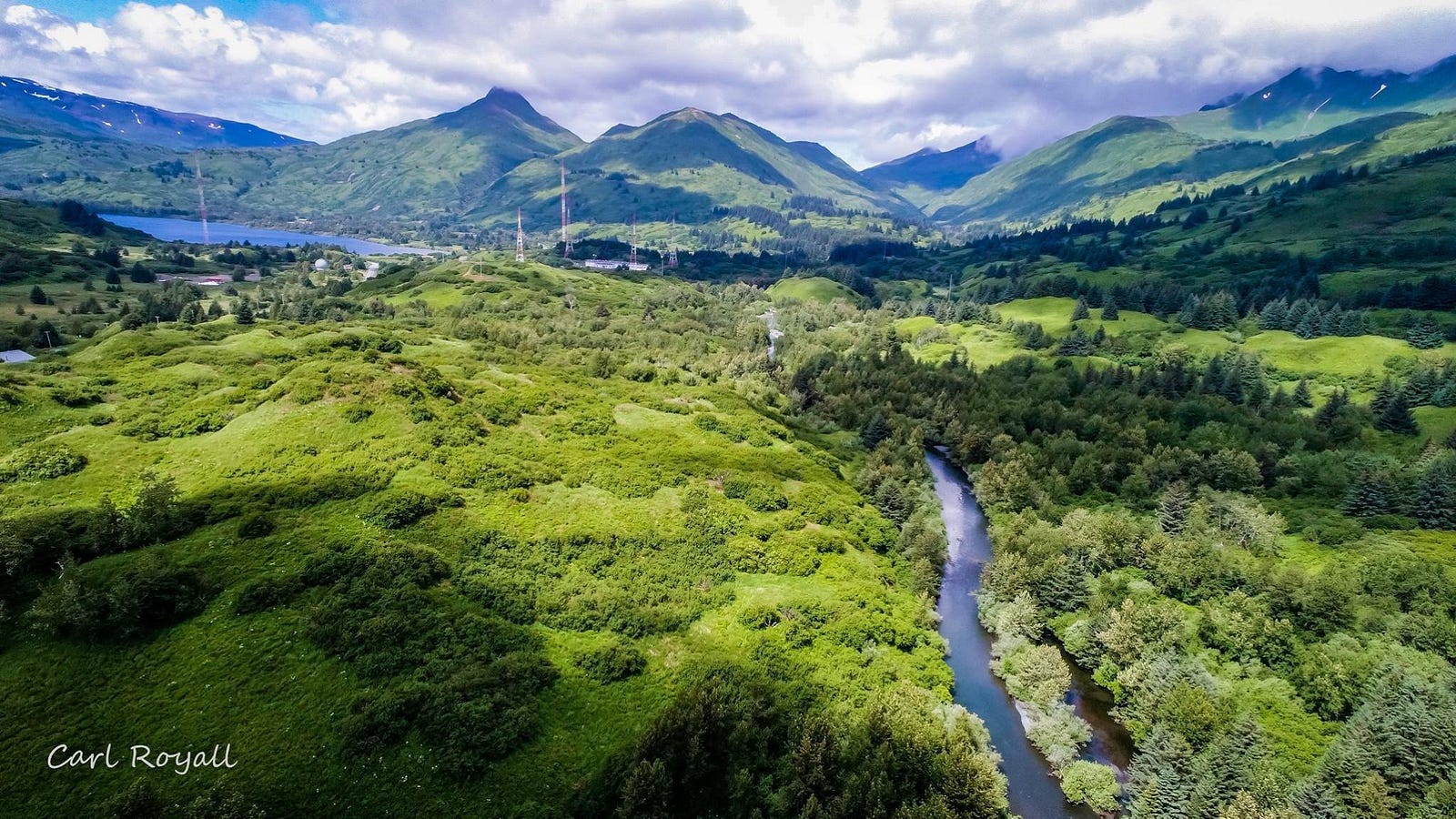
For adult and tiny juvenile salmon, the fragmented habitat can be difficult to navigate and lead to declines in the overall health of salmon populations and other fish species. Old culverts and unused roads may prevent returning adults from reaching spawning grounds and also block the juvenile fish from moving within the river, limiting their access to rearing and feeding areas.
Partners are working to help baby salmon get where they need to go: the Service’s Fish and Aquatic Conservation Program field staff are coordinating a Buskin River watershed restoration effort in partnership with the Kodiak Soil and Water Conservation District, the Coast Guard, the Alaska Department of Fish and Game and Alaska Department of Transportation and Public Facilities, Natives of Kodiak, and NOAA National Marine Fisheries Service. With funding support from the Exxon Valdez Oil Spill Trustee Council, over the next three years this partnership is working to restore aquatic habitat connectivity by removing several barriers to fish passage in the Buskin River watershed.
Out of 19 identified road-stream crossings to be addressed, some culverts can be removed completely, while others will be replaced with engineered fish-friendly designs. Service fishery field biologists will also monitor and compare the habitat changes and juvenile salmon access as the barriers disappear.
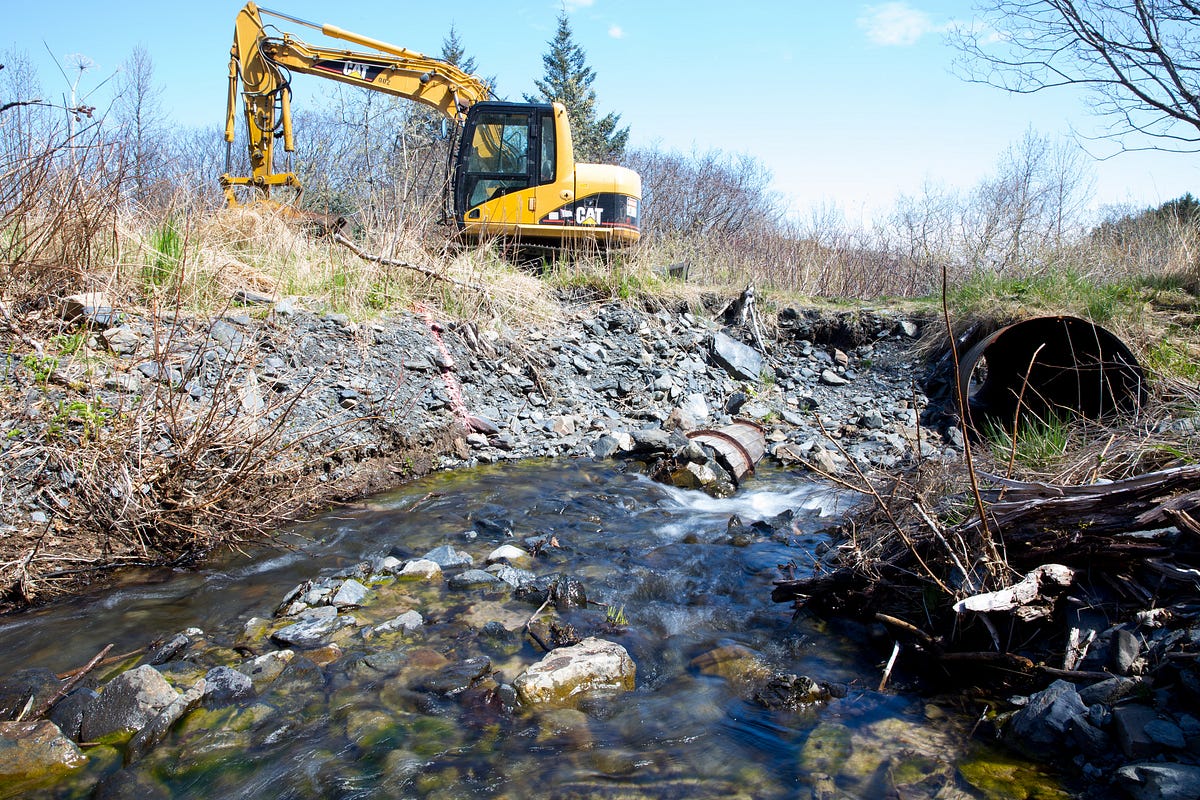
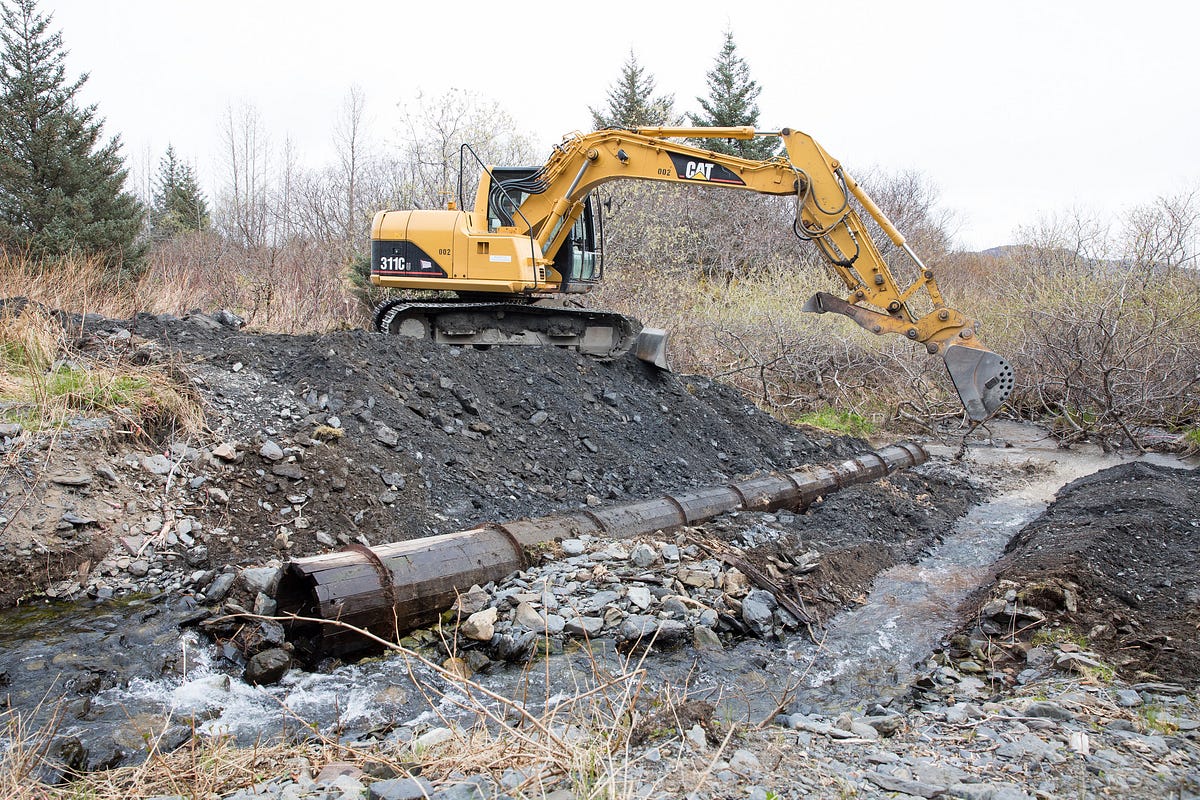

Healthy River, Healthy Resource
As the Service and its partners remove barriers to fish passage, others work to monitor and maintain the health of the river and its fish.
Upstream from Salmon Camp, Alaska Department of Fish and Game intern Tina Cruz helps seine up sockeye for sampling. Her crew leader places a fish in the sampling cradle and calls out the length and sex, while Tina plucks a small silver scale from the salmon for later age analysis.
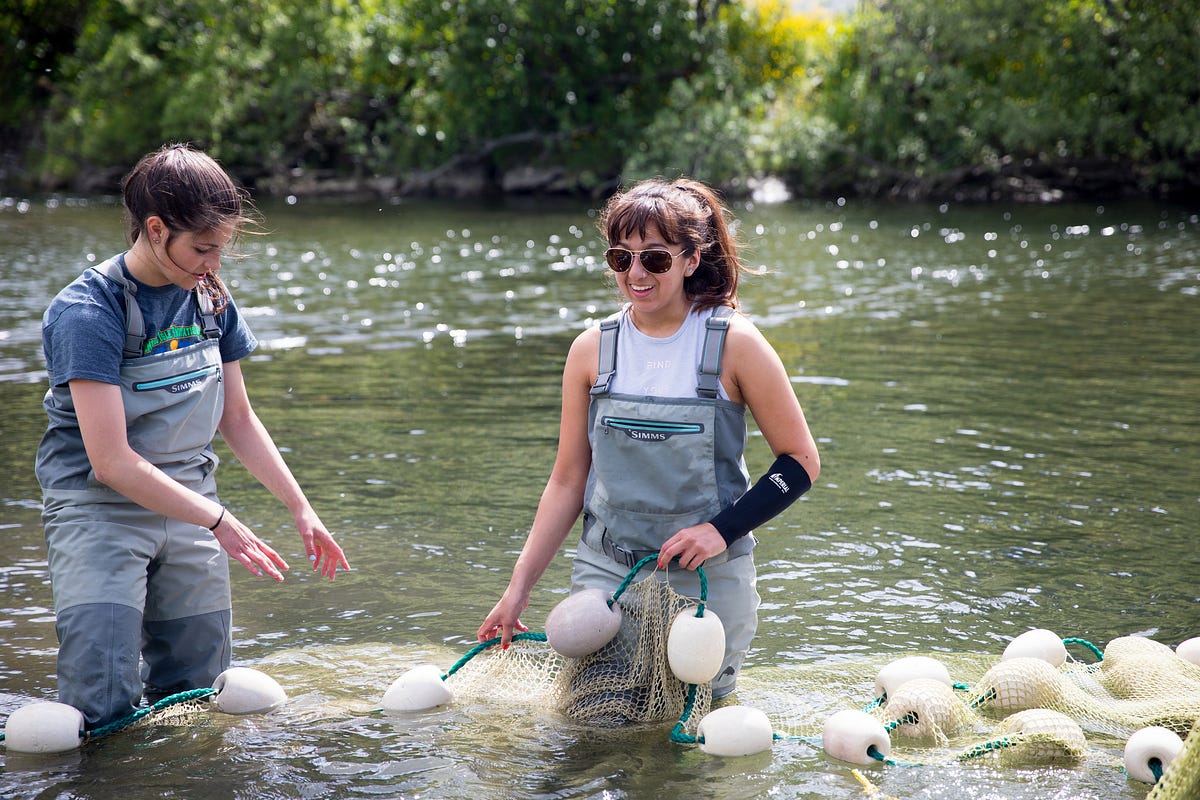
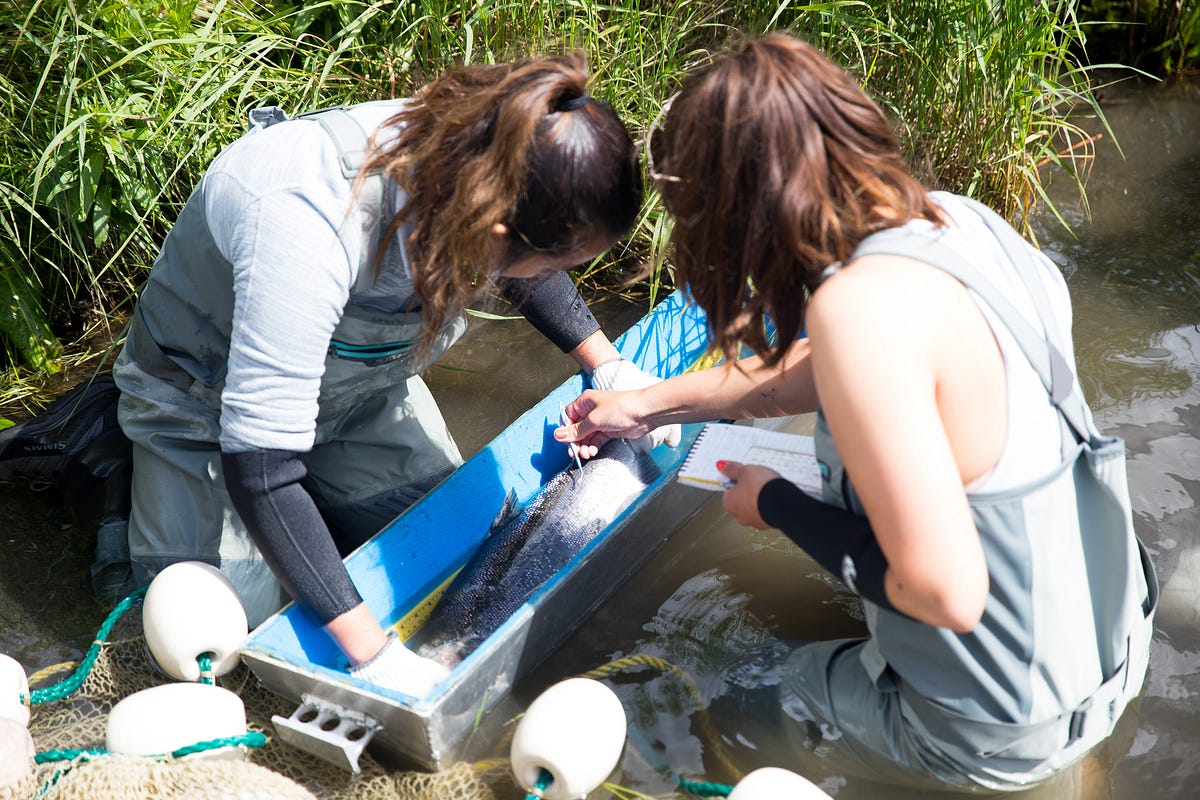
Monitoring the number of salmon that escape into the lake to spawn and analyzing trends in their age and size helps managers ensure the future sustainability of the run?—?and future opportunities for subsistence and sport fishermen. Research is an important tool to maximize this fishery that is recognized by the Federal Subsistence Board as a resource important for customary and traditional use for Kodiak residents.
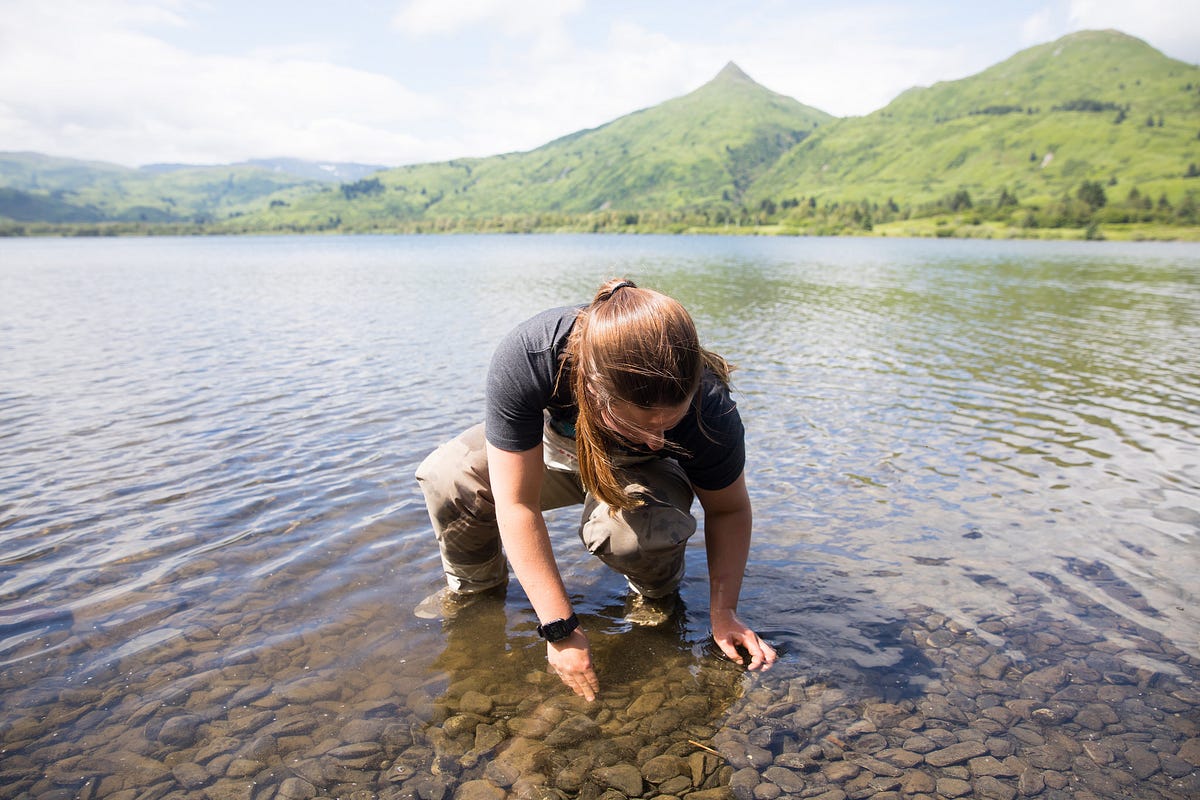
Just around the corner from salmon sampling, Kelly Krueger, biologist with the Sun’aq Tribe of Kodiak, turns over rocks in the shallows of the Buskin Lake. She lifts up a female signal crayfish, pinchers grasping and abdomen full of eggs. The crayfish are newcomers to Kodiak, and are considered invasive to Alaska?—?found currently only in the Buskin.
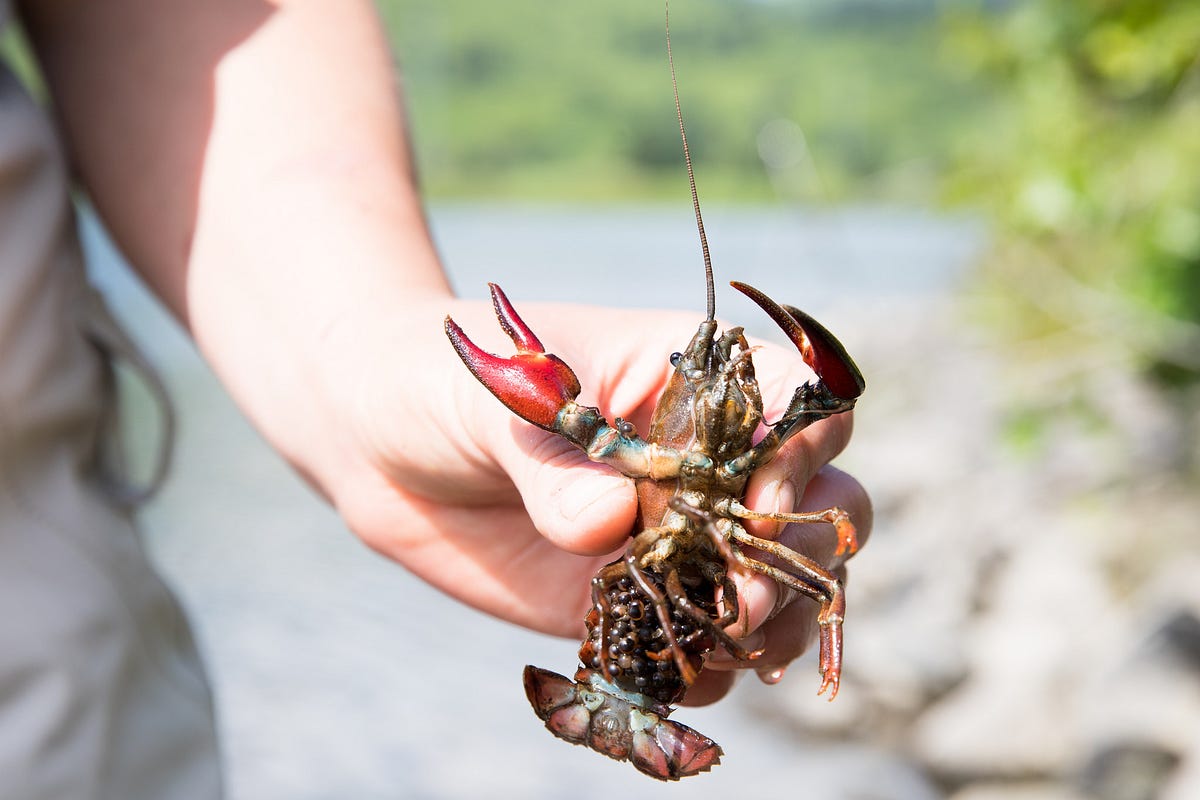
“We don’t know how they got here, how they established, and we don’t know what they’re doing?—?other studies show that they do eat salmon eggs and juvenile salmon and trout. As a tribe we’re really concerned about what these crayfish could do to our subsistence resources, and we’d like to learn a little more about how they could impact Buskin salmon,” says Krueger.
The close proximity of the Buskin watershed to civilization poses risks as people accidentally introduce harmful invasive plants or animals. As metal barriers come down, new barriers to water flow have emerged: reed canarygrass is considered a major threat to wetlands throughout western North America, replacing native habitats, forming dense stands that can alter stream channels and diminish food and cover used by young salmon. In 2016, Kodiak Refuge staff and the Kodiak Soil and Water Conservation District began restoring native habitats impacted by canarygrass in the Buskin drainage?—?control efforts continue during the summer and fall of 2017.
Concerned stakeholders are working together to tackle invasive species issues. Anglers and the Kodiak community can help, too! Prevent the introduction and spread of harmful species by cleaning boats, boots, and gear, and do not empty aquariums into wild river systems.
The Buskin River Future?—?Follow Along!
From tiny mountain streams to the ocean mouth, the Buskin River bends through Kodiak’s backyard. Baby salmon dart over gravel beds, bears sniff along banks, anglers cast, boats unwind nets, and campers sing the first fish home. Follow along with us as we work with partners to improve salmon habitat in the Buskin River watershed and educate the next generation!

Explore:
- Enjoy more photos of the Buskin River stories HERE.
- Be part of the solution for invasive species! Learn to identify harmful species and where to report sightings. For Alaska, you can report sightings online. For more information about Kodiak invasive species, check out the local work of the Kodiak Soil and Water Conservation District and the Sun’aq Tribe of Kodiak.
- For more information on actions to restore fish passage in the Buskin River, contact the USFWS Anchorage Fish and Wildlife Conservation Office at (907) 271–1798.
- For more information about the Buskin River research conducted by the Alaska Department of Fish and Game and supported in part by the USFWS Office of Subsistence Management: Fishery Data Series ?14–26
Please share and hit ? below if you like this story. For more, follow us on facebook.
In Alaska we are shared stewards of world renowned natural resources and our nation’s last true wild places. The lands and waters of this place we call home nourish a vast and unique array of fish, wildlife and people. We cultivate a reverent awareness and respect for all things, from Alaska’s smallest plants and most iconic animals to its diverse communities and cultures. Our hope is that each generation has the opportunity to live with, live from, discover and enjoy the wildness of this awe-inspiring land and the people who love and depend on it.



